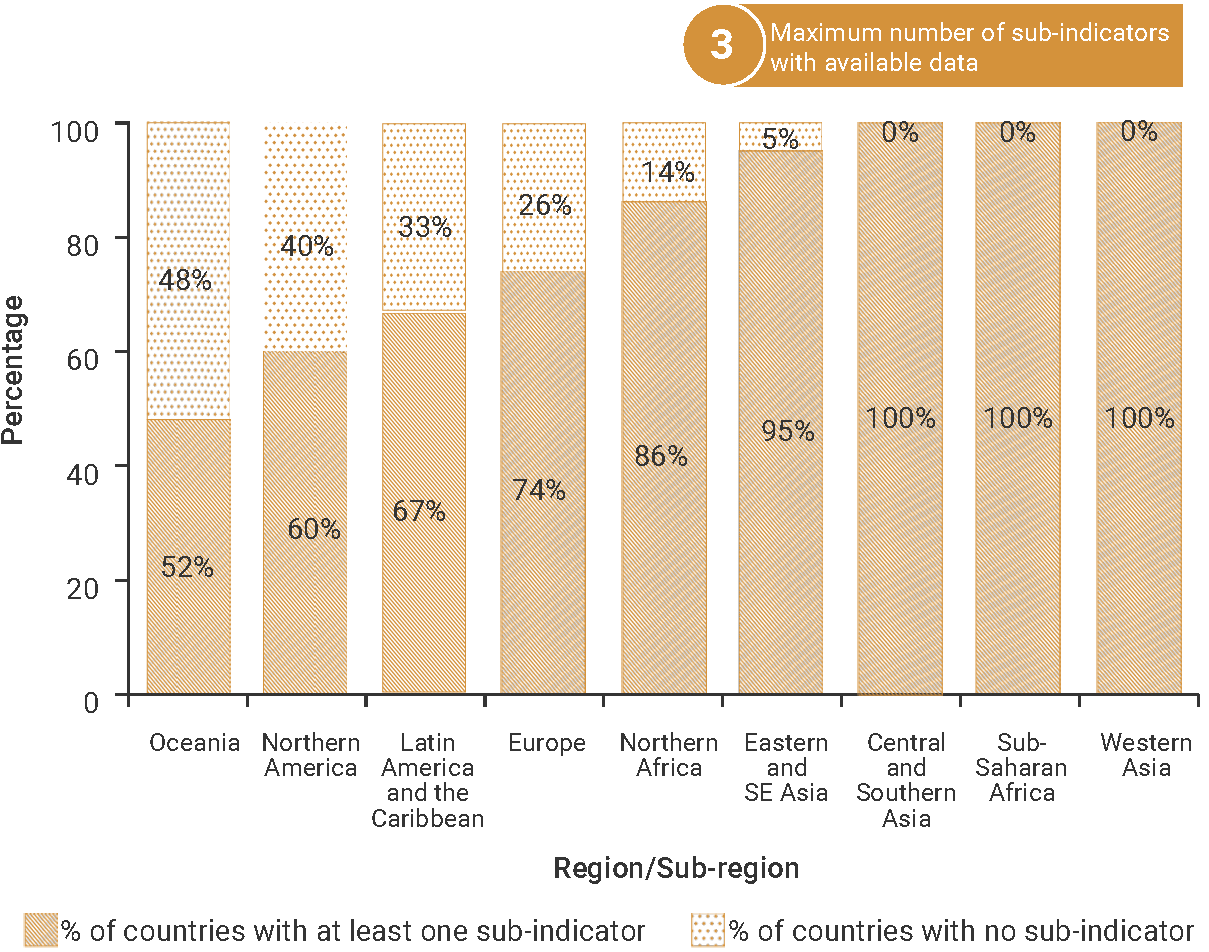SDG Indicator 17.18.1: Statistical capacity indicators
1. Key features and metadata (a and b)
Definition: This indicator measures the capacity of countries to produce a set of official statistics from national databases to support the SDGs.
| Sub-indicator | Disaggregated by |
|---|---|
|
SG_STT_ODIN Open Data Inventory (ODIN) Coverage Index |
No current data disaggregation available.
|
|
IQ_SPI_PIL4 Data Sources performance index (Statistical Performance Indicators Pillar 4) (Index) |
|
|
IQ_SPI_PIL5 Data Infrastructure performance index (Statistical Performance Indicators Pillar 5) (Index) |
Sources of information: The ODIN Coverage Index relies on data from National Statistical Office (NSO) websites and any official government sites or portals of the National Statistical System (NSS) that are linked to the NSO website.The Statistical Performance Indicators (SPI) rely on data from the World Bank, International Monetary Fund (IMF), Open Data Watch, PARIS21, International Labour Organization (ILO), World Health Organization (WHO), United Nations Educational, Scientific and Cultural Organization (UNESCO), International Household Survey Network (IHSN), United Nations (UN), and the Food and Agriculture Organization (FAO).Some data is collected directly from the websites of National Statistical Offices.
Related SDG Indicators: 17.18.2 (Number of countries that have national statistical legislation that complies with the Fundamental Principles of Official Statistics), 17.18.3 (Number of countries with a national statistical plan that is fully funded and under implementation, by source of funding),17.19.1 (Dollar value of all resources made available to strengthen statistical capacity in developing countries), and 17.19.2 (Proportion of countries that (a) have conducted at least one population and housing census in the last 10 years; and (b) have achieved 100 per cent birth registration and 80 per cent death registration).
2. Data availability by region, SDG Global Database, as of 02 July 2025

3. Proposed disaggregation, links to policymaking and its impact
| Proposed disaggregation | Link to policymaking | Impact |
|---|---|---|
|
The Open Data Inventory Coverage Index, by topical categories(0 to 100 scale)(Open Data Watch [ODW] 2024):
Applies to:
|
This disaggregation emphasizes the coverage, openness and accessibility of data provided by NSO websites and other official government websites on all major dimensions of sustainable development (i.e. poverty, education, health, gender, and the environment). It is useful information for countries to: (a) assess where they stand in terms of statistics availability and accessibility, topic by topic and (b) identify areas with critical gaps where efforts should be prioritized to allocate resources to enhance their national statistics systems. This disaggregation is in line with the UN Convention on Access to Information, Public Participation in Decision-Making and Access to Justice in Environmental Matters (UN 1998) and theIAEG-SDG recommendations regarding the ODIN Index. |
By monitoring the public availability and openness of official statistics by sustainable development topics and assessing national governments’ ability to produce open data and their alignment to open data international standards, this disaggregation contributes to strengthening the transparency of national policies, related interventions and outcomes and, in doing so, the democratization of societies. It helps to foster the dialogue between the administration and various groups of stakeholders and is key to promoting the participation of civil society and development partners in public affairs. It is central to improving the awareness of the population on major development issues, general living conditions and wellbeing – notably, in relation to poverty, food security health, education, employment, and other social issues. Data accessibility and transparency is also critical for the sound management of environmental matters(UN 1998) as well as for the transition towards the economic sustainability of countries(Mohammed Islam and Lederman 2020). |

